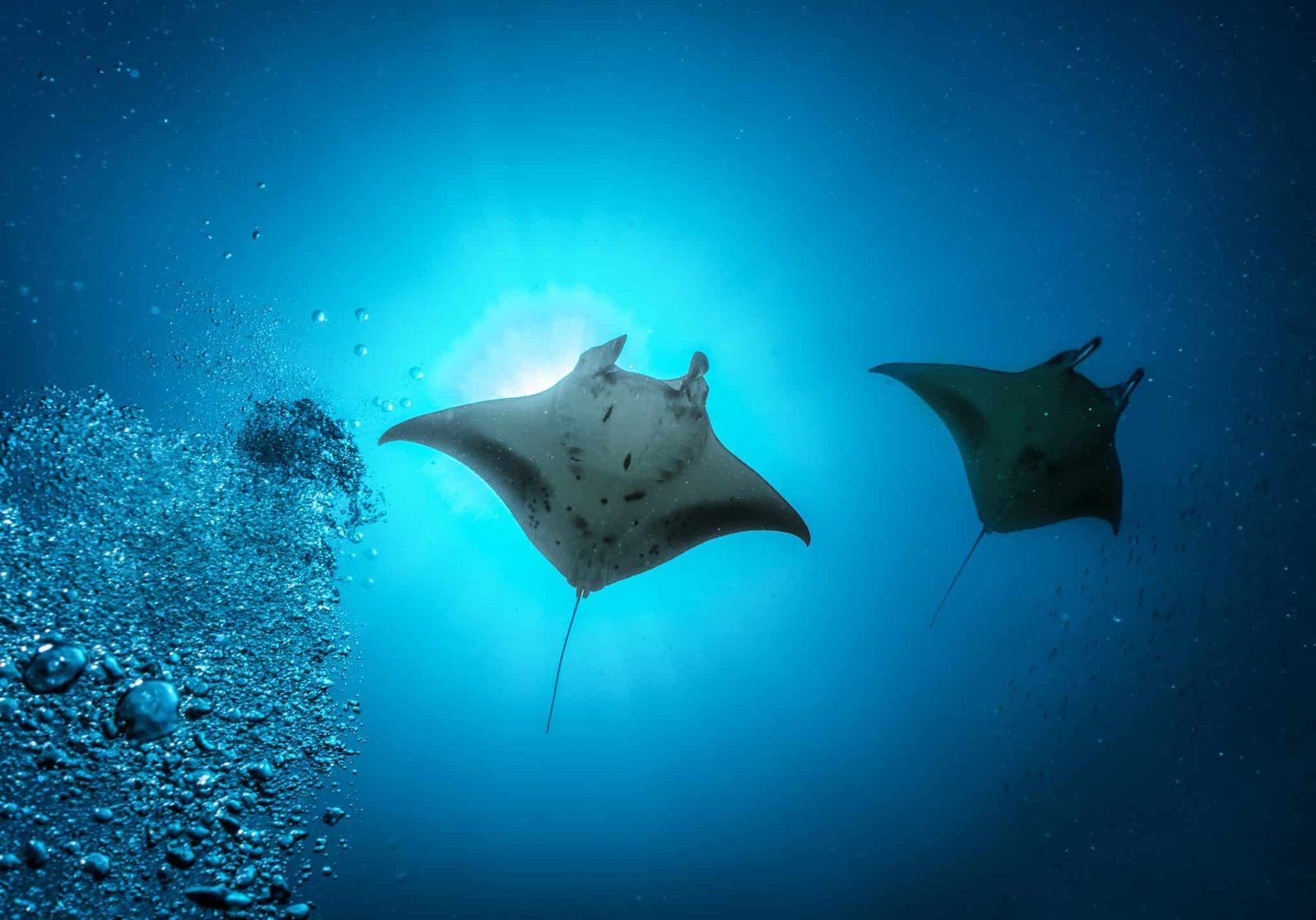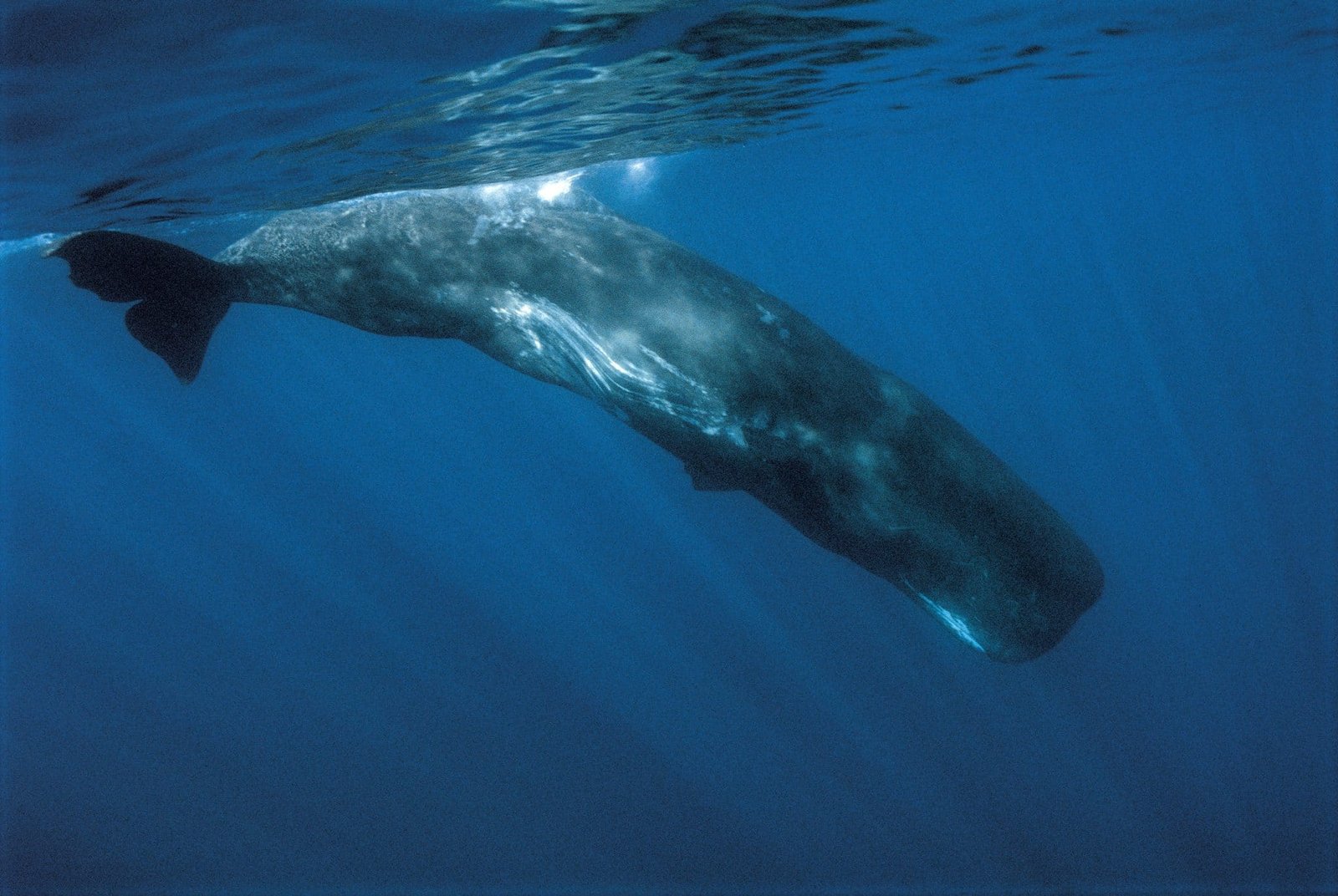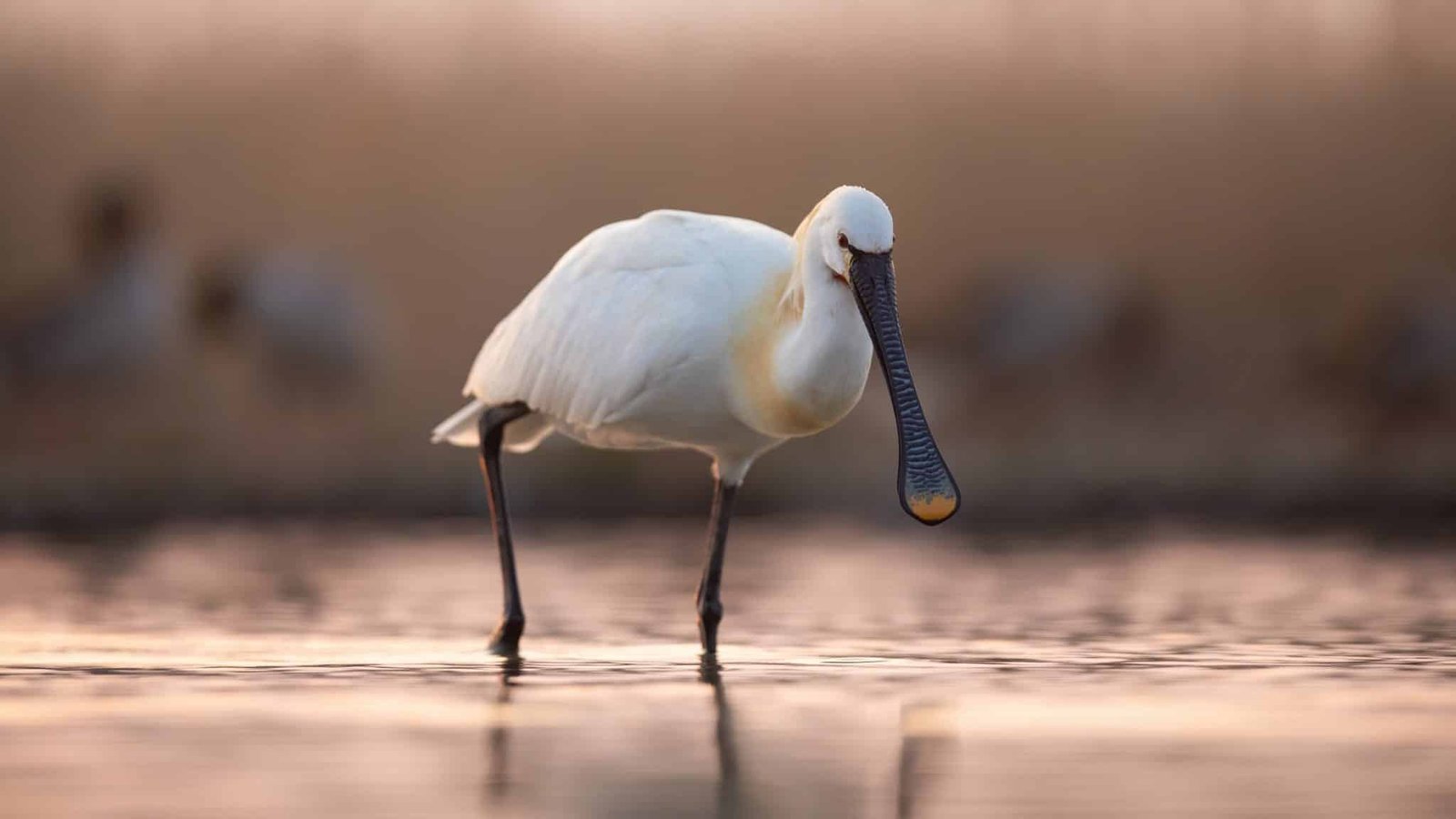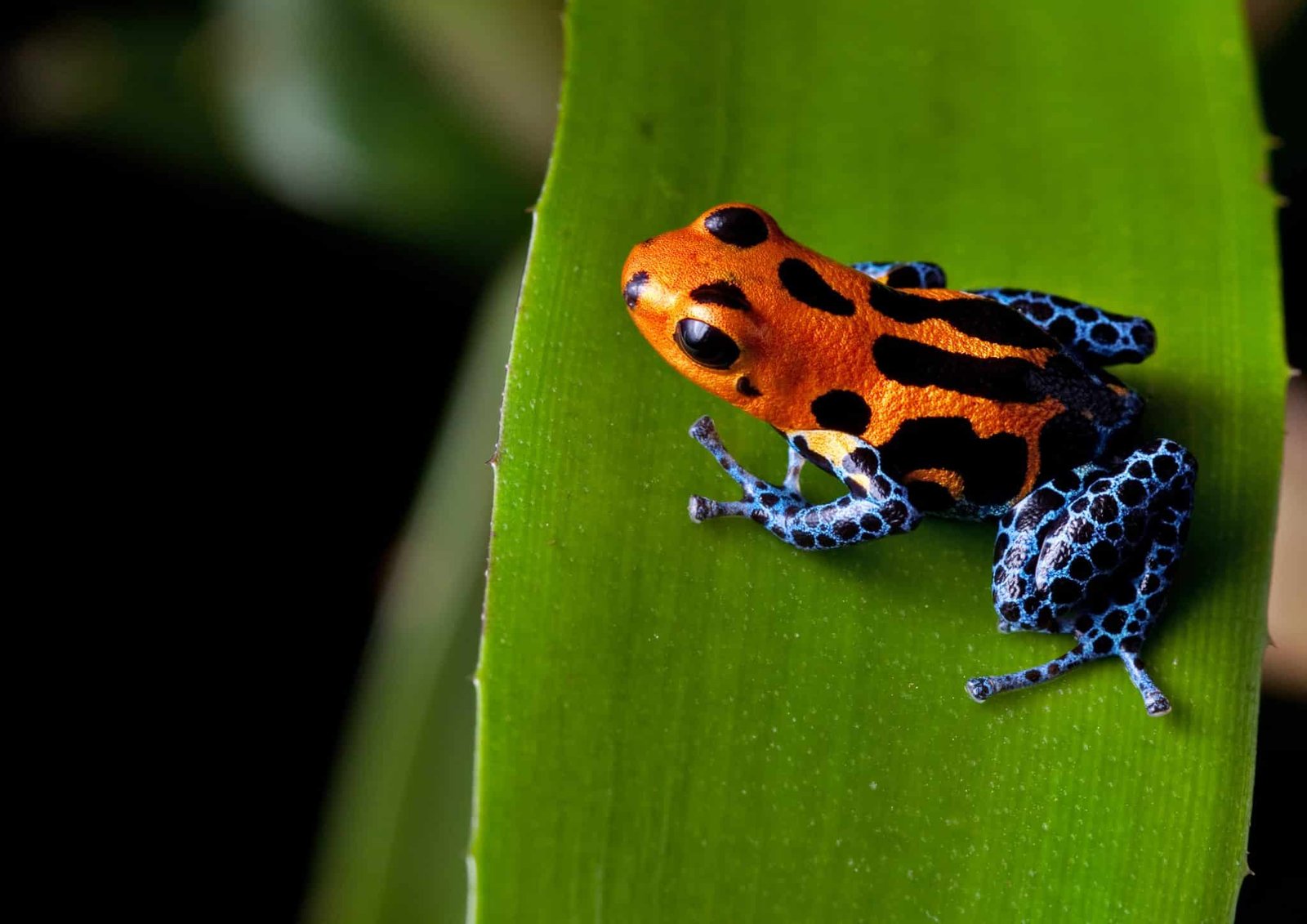Maldives: Common, Rare & Dangerous Animals & Where To Find Them!
The Maldives is an independent nation in the Indian Ocean, and thanks to a tropical monsoon climate it’s filled with vibrant wildlife and animals!
Between November and April is considered the best time to visit the Maldives because you avoid the monsoon season while still enjoying warm weather.
That’s also one of the best times to see the ocean lit up with what looks like little stars year-round – those are bioluminescent plankton that light up the sea at night, creating this magical effect!
Because the Maldives is such a small, low-lying island group, the wildlife is unique and exotic. However the population of land mammals is small.
But if you’re looking to learn more about the wildlife and animals in the Maldives, you’ve come to the right spot.
Continue reading to learn more about common, rare, and dangerous animals you can find in the Maldives and where to spot them when on vacation!

Common Animals In The Maldives To Try & Spot
1. White Tip Reef Shark
White Tip Reef Sharks are one of the most commonly found sharks in the Indian Pacific Ocean. They are easily recognized by the white tip on their first dorsal fin and upper tail fin, which will sometimes poke through the water’s surface.
White tip reef sharks are nocturnal, coming out to feed at night. Their diet consists of mostly bony fish, such as eels, snappers, squirrelfish, and more.
Since they’re often hunting in darker waters, they rely less on their sight, and instead use their olfactory and electrical cues, which are highly responsive to nearby prey.
White tip reef sharks are small sharks, with a slender build, a length averaging around 1.5 meters long, and only weighing 22 pounds. They are also capable of pumping water over gills for respiration even when laying motionless at the bottom of the ocean!
As a species, white tip reef sharks are quite curious. In the wild, these sharks are typically not territorial and don’t have any threat displays. In fact, these sharks are relatively harmless to humans and remain calm unless provoked.
If you spend time diving in the Maldives or exploring any of the coral reefs, you may come across one! Keep your distance and don’t hurt them. White tip reef sharks are protected by the Maldives, and there are huge fines in place for anyone that catches one.
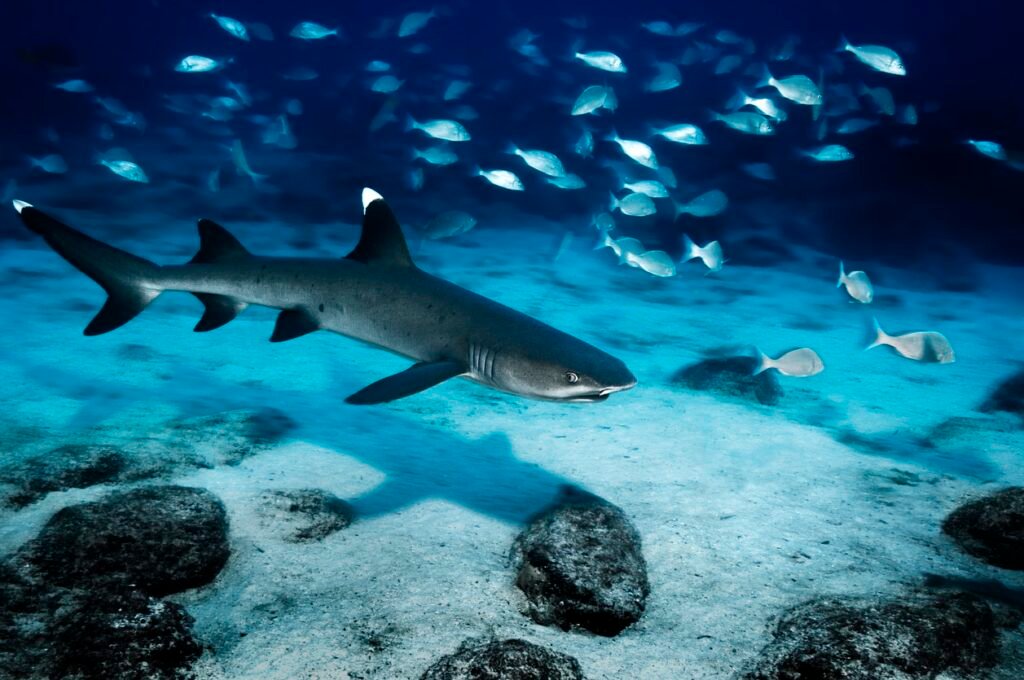
2. Indian Ocean Oriental Sweetlips
Oriental Sweetlips are native to the Indian Pacific Ocean. They are abundant in and around coral reefs often swimming around in clear, shallow lagoons.
These fish are easy to spot with their big, often swollen, appearing lips. They are easy to approach if diving in the Maldives, and in some cases their curiosity might get the best of them and they may even approach divers!
These fish are nocturnal and tend to stay near hiding spots, so they can escape when they feel threatened. Their diet consists of small crustaceans and worms. Indian Ocean Oriental Sweetlips can also grow to be quite large, reaching almost 3 feet in length.
Most interestingly, young sweetlips often have quite a different appearance than adult sweetlips. Young sweetlips are often colored with bold spots and stripes, that are black, white, yellow, and red in color. As they grow into adults, their spots shift into horizontal black-and-white stripes.

3. Frigate Birds
Frigate birds are common in the Maldives and males are often recognized by their striking red front pouch. The males and females look quite different, the females are larger and don’t have the red pouch possessed by the males.
These seabirds have a diet consisting mainly of fish and are considered to be aggressive toward other birds. Frigate birds have even been caught harassing birds mid-flight, forcing them to give up their last meal so they can steal it for themselves.
Frigate birds can be found coasting over the ocean and beaches in the afternoons and evenings. Typically staying near coral reefs and shallow, clear water. Their nests can be found nestled within shrubs close to the ocean.
These birds spend most of their life gliding over the ocean, and almost never stopping to land on water. Although these birds are equipped with webbed feet, their feathers aren’t waterproof, so if they get wet, it takes time before they can take flight again.
These birds are also equipped with an incredibly long wingspan given the size of their bodies. They are similar in size to a chicken, but their wingspan reaches close to 7.5 feet! Frigate birds also have forked tails, giving them the power to change directions while gliding in the wind.
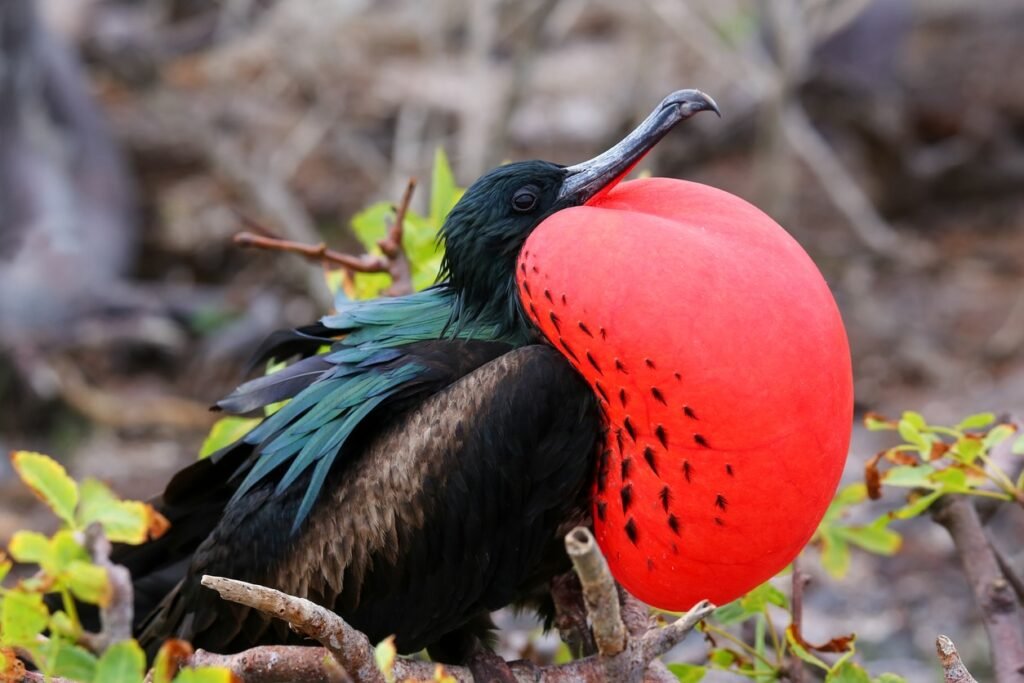
4. White Breasted Waterhen
White breasted waterhens are the national bird of the Maldives and can be spotted in tropical mangrove forests, wetlands, marshes, and swamps. They can be recognized by their distinct flat body and, more notably, their white face, neck, and breast.
Males and females look quite similar, although males are typically larger in size. On average, white breasted waterhens range anywhere from 15-28 cm in length and are only about 20 cm in height. These birds are often seen in pairs or venturing out on their own and are rarely spotted in large groups.
You might be able to find these birds searching for their next meal near bodies of water, often staying close to the ground.
They typically eat small fish, insects, worms, invertebrates, and the roots of various aquatic plants.

5. White Tern
The white tern is smaller than other gulls seen around the Maldives, often between 20-55 cm in length, and can be found in and around the Addu Atoll.
Most recognizably, these birds have bright white feathers, striking black eyes, and long black beaks.
To onlookers, their flying can seem erratic, due to rather slow wing beats, but it allows them the energy and strength to hover for extended periods.
These birds are typically found nesting on the ground, in small tree branches, rock ledges, and sometimes even on manmade structures. They’ll often build their nests near bodies of water so they are close to food since they will dive for small fish nearby.
They are also known for their unusual behavior of laying their eggs outside of a nest, and instead finding small indents or forks on branches to lay their eggs.

6. Common Garden Lizard
Common garden lizards measure around 10 cm in length and have an earthy brownish, green color to help them blend in with their surroundings.
These animals are common all over the Maldives, and are often seen sunbathing on rocks or sitting in small bushes. After rainfall, these lizards can be seen scavenging insects and bugs that have fallen out of the trees.
Common garden lizards are also able to change color. Some can paint their whole bodies a bright red, while others can only shift the color of their head and neck. During mating season, from May-June, male lizards will turn bright red to attract a partner.
Common garden lizards are related to iguanas, but unlike other lizards, they do not drop their tails. These lizards can have long tails though, sometimes reaching up to 37 cm.
If you’re in the Maldives and it starts to rain, keep an eye out for scurrying garden lizards trying to find fallen bugs on the ground!

7. Indian Flying Fox
The Indian flying fox is considered one of the largest bats on Earth, averaging around 23 cm in length and weighing up to 1600 grams.
These bats eat a wide variety of fruit, often seeking out ripe bananas and mangos. They can create quite a bit of destruction on fruit farms and are often viewed as vermin but their feeding habits allow them to be great pollinators.
These bats are nocturnal but can be spotted by their reddish fur and long snout. They commonly reside near bodies of water, enjoying the humidity. You may find them in the mangroves and tropical forests, resting in fig and tamarind trees.
In some areas, these bats are hunted for food and medicines, but be careful if you see one of these bats! Observe their uniqueness from afar because these bats have actually been known to carry diseases that are transmittable to humans.

Rare Animals In The Maldives You’d Be Lucky To See
1. Whale Sharks
Whale sharks can be spotted swimming in the depths of the South Ari Atoll. These are gentle creatures and live year-round in the Maldives.
Whale sharks are considered to be one of the largest fish, growing up to 20 meters long, although you’ll typically find them somewhere between 5-10 meters.
The best time to spot these sharks is in May and November, but they can be seen year-round on the island. Whale sharks prefer to stay on the west side of the Indian ocean May-December and then slowly make their way to the eastern side up until April.
Whale sharks have flattened heads, are grey in color, and have white spots covering their bodies. Like whales, these sharks are filter feeders, often only eating small plankton and other tiny animals.
When visiting the Maldives, there are many opportunities to go on tours where you’ll have the opportunity to see these beautiful fish. However, keep in mind that this species is under strict protection, and ecotourism has resulted in injuries to these animals.
If you’re lucky to see one, respect their space and admire their elegance and beauty from a distance.

2. Giant Manta Ray
The giant manta ray is one of the largest rays in the world, with a 29-foot wingspan! These rays can be found in tropical water, and are often swimming off the coast.
Seeing these rays is common in the Maldives since they are home to the largest recorded manta ray population.
Manta rays are gentle creatures and have the largest brain of any fish. They are curious and might try to investigate divers nearby!
These rays can live up to 40 years old and similar to the whale shark, giant manta rays also are filter feeders, with a diet consisting of mostly plankton.
Giant manta rays are greatly threatened by commercial fishing, but as ecotourism has increased, more protections have been put in place to protect these incredible animals.
Related: Sea Snakes In The Maldives

3. Green Sea Turtle
Green sea turtles are found commonly off the coast of the Maldives and are the largest hard-shelled sea turtles in the world. They can grow between 3 and 4 feet long and weigh anywhere from 300-350 pounds, live up to 70 years.
Green sea turtles have a diet mainly consisting of seagrass and algae – they eat so many greens, it gives them a greenish coloring!
Sea turtles are cold-blooded and they rely on their environment to warm them up. This leads to them being quite common throughout the Maldives and, when searching for green sea turtles, Laamu Atoll is one of the largest green turtle nesting beaches.
Sea turtles have been around for thousands of years and are an integral part of marine ecosystems. But unfortunately their population has been recently declining in recent years due to ocean pollution, commercial fishing, and more.
So although it might be tempting to try and touch one of these sea turtles swimming through meadows of sea grass, or swimming through the warm waters, it’s best to leave them be.

4. Giant Clam
Giant clams are found on ocean floors and once it finds a safe spot, they will fasten themselves to part of a coral reef for life.
They can live to be 100 years old and grow up to four feet while reaching a weight of up to 500 pounds!
Giant clams have a symbiotic relationship with algae, where the algae can live within the giant clams and safely have access to sunlight. In return, the giant clams can feed off the sugars produced by the algae.
These clams vary in vibrant colors and can be spotted latched onto various coral reefs. If you are diving in the Maldives, you are likely to come across one of these clams. They have been given the nickname of “man-eaters” but, despite their size, these clams are a peaceful species.

5. Bowmouth Guitarfish
Bowmouth guitarfish are rays and can typically be found in shallow waters along the coast, spending time in mangroves and near coral reefs. Their faces are thought to resemble a longbow, hence their name!
Bowmouth guitarfish like to stay close to the bottom of the ocean and are often found in depths of 1-20 meters. They are typically under 2.4 meters in size but have been reported to grow up to 3 meters long and weigh up to 297 pounds!
Bowmouth guitarfish often feed off mollusks, shrimp, crab, and clams. They have eyes on the top of their head which restricts their view, forcing them to mainly use their sense of smell to find their prey.
These rays have been spotted at Fishivaru in the Maldives by divers!

Dangerous Animals In The Maldives To Watch Out For
1. Barracuda
Barracudas are large fish located in warm, shallow coastal waters, usually near coral reefs, mangroves, and hidden in seagrasses.
Due to a wide number of species, barracudas range in size from 50 cm- 2 meters. Most recognizably, barracudas have protruding bottom jaws and large teeth, that can be quite intimidating.
Barracudas don’t go after swimmers, although they are quite curious, sometimes they have been known to follow around divers.
Their diet often consists of groupers, mullets, anchovies, and squids. Barracudas are incredibly fast swimmers, reaching up to 25 mph, allowing them to catch fish and hide from predators.
If you’re planning to go diving, it’s good to remember that barracudas are drawn to shiny objects, so leave jewelry at home to avoid any unwanted attention.
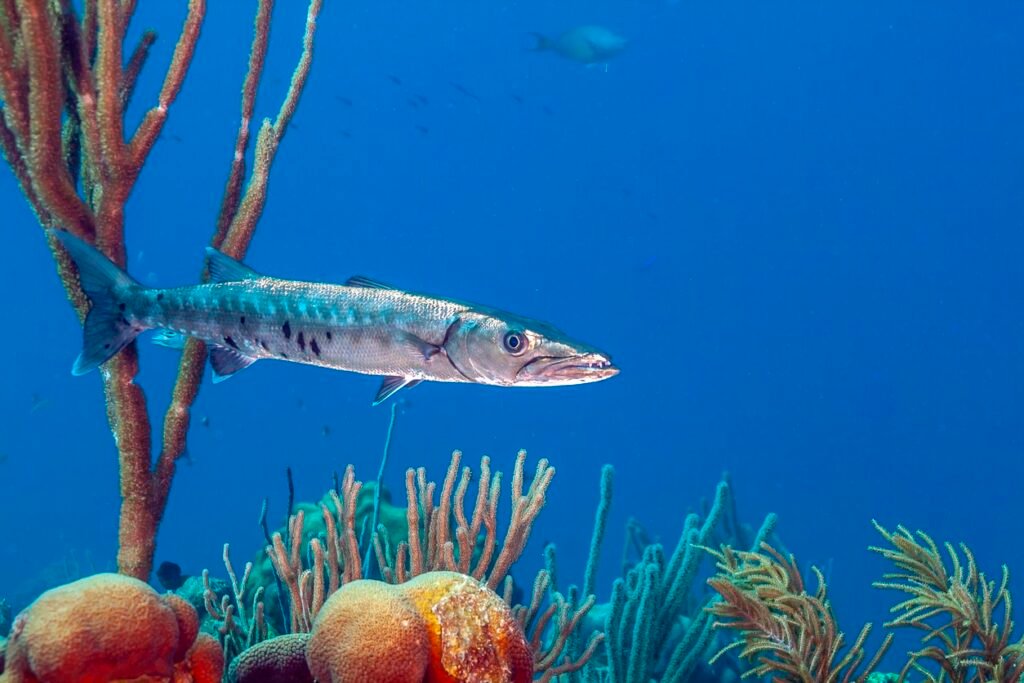
2. Lionfish
Lionfish are venomous fish native to the Indian Pacific Ocean and commonly found swimming through coral reefs around the Maldives. These fish can grow up to 47 cm long and live up to ten years.
These fish have a distinct striped pattern across their body. However, they are most known for the poisonous spikes sticking out of their body.
Humans that’ve gotten stung by lionfish have most commonly reported immense pain and sweating.
Lionfish often feed off crabs, shrimps, and small fish, and have even been observed to have cannibalistic tendencies, eating other fish of their own species.
Although these fish are quite striking in appearance, it’s best to keep your distance!

3. Stonefish
Stonefish can be hard to spot, as their rocky exterior makes them excellent at camouflaging themselves into coral reefs – some have even been seen with algae growing on their exterior!
Although you might not spot these fish at first, it’s important to stay aware of your surroundings when diving in the reefs surrounding the Maldives.
Stonefish can grow up to 20 inches and are considered one of the most venomous fish in the world. Their dorsal fin contains a poison, that when injected, can kill an adult human in under an hour.
When exploring the beaches and coral reefs in the Maldives, keep an eye on the ground! Don’t step on anything resembling coral or stones. Not only will it harm the coral, but it will protect you from hidden animals that could be dangerous!
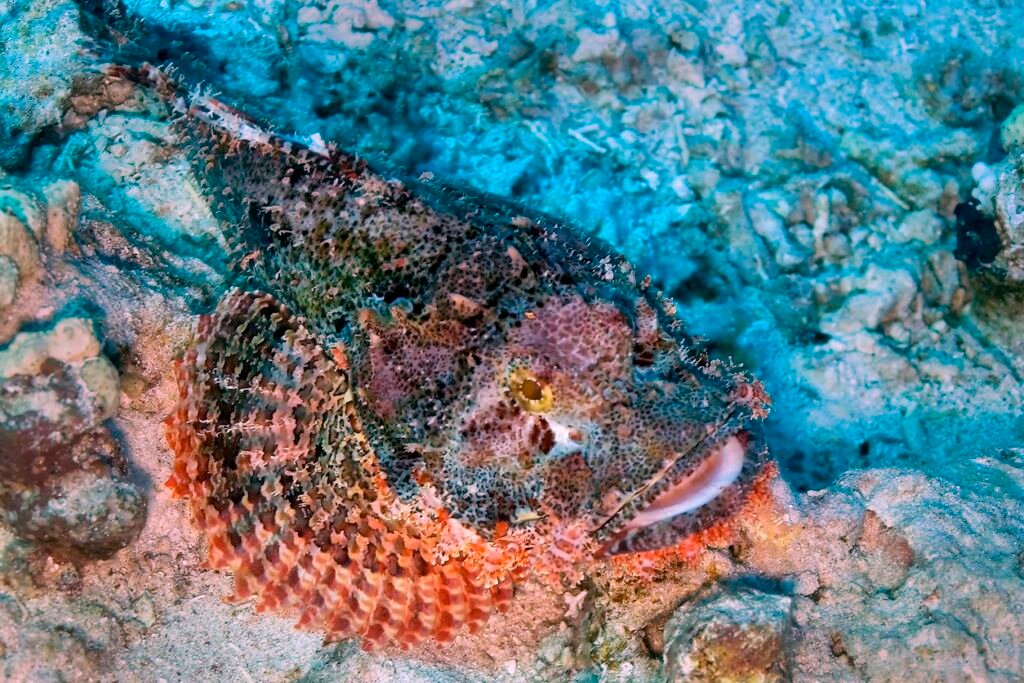
4. Blue Ringed Octopus
This venomous octopus is generally smaller than others and can be spotted in tidepools and amongst coral reefs.
Measuring up to 10 inches in length. blue ring octopuses appear yellow, but when threatened their rings turn to a bright blue.
If this octopus feels threatened and attacks, their bites produce a toxin that blocks nerve signals. One might not notice the bite initially, but it can lead to muscle numbness, nausea, blindness, loss of senses and motor skills, and in the most severe cases can lead to death.
Because of their bright color and small size, they are relatively easy to spot and might even look tempting to try and touch. However, if you see one of these, it’s best to create as much space as possible so they don’t feel threatened.

5. Blue Spotted Ray
The blue spotted ray is common in deeper waters of the Maldives and can be seen near coral reefs and close to the sea floor.
It likes to bury itself under a layer of sand but has quite an incredible appearance. These rays are a sand color and are covered in vibrant blue spots.
These rays can grow up to 28 inches long and are found typically feeding on shrimp, crabs, and other small sea creatures.
Blue spotted rays like to be left alone and will defend themselves by stinging any perceived threats. The venom at the end of their tails can prove to be fatal to many animals and can leave humans in serious pain and even lead to death in severe cases.

6. Maldives Cone Snail
The Maldives cone snails are beautiful gastropods living in shallow waters, sometimes buried below the sand.
These snails can be found being sold in markets for food but despite their small size, are quite fatal creatures.
Maldives cone snails look unassuming but possess a venom that they inject into predators through a tooth that is sharp enough to pierce through wetsuits and gloves. This venom can create numbness and paralyze its prey.
So, although these snails have intricate beautiful shells that may catch your attention, it’s best to leave them be to avoid any injuries while on your trip!

The Animals Of The Maldives: Our Final Thoughts
The Maldives is a beautiful spot to vacation, filled with a wide variety of unique and exotic animals.
When planning your trip, try to visit areas where you might catch a glimpse of the vulnerable whale sharks, frigate birds, and giant clams!
There are plenty of places to go diving around the various coral reefs surrounding the Maldives, where there will be guides available to answer questions and point out special animals.
But, when exploring on your own, it’s great to appreciate the unique creatures, and recognize the dangerous animals to avoid accidentally threatening them.
As always, when vacationing or visiting a new place, be respectful of the wildlife and natural beauty surrounding you.


